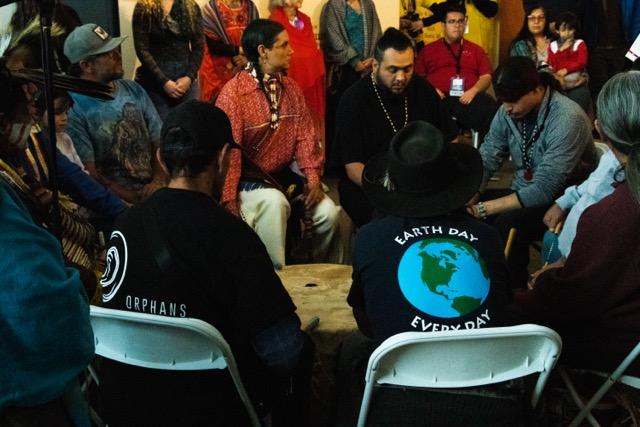
Two Colorado State University-Pueblo professors discussed the media’s coverage and growing influence of transgender reality star Caitlyn Jenner in a campus forum Oct. 15.
Joanne Gula of the mass communications department and Karen Yescavage of the psychology department were invited to discuss the reality star at the first of two “Cool Women Hot Topics” forums this semester and took the opportunity to look into Jenner’s authenticity.
The objective of the “Caitlyn Jenner: Transgender Trailblazer or Media Opportunist” topic was to discuss how Jenner has become the titleholder for the Lesbian, Gay, Bisexual and Transgender community in such little time, how the media has influenced this unconventional idea of beauty standards and a lack of awareness in coverage of her.
The event, which was sponsored primarily by the CSU-Pueblo women’s studies program, brought in 50 guests from all the departments in the university. The library and the Diversity Resources Center co-sponsored the event.
Caitlyn Marie Jenner, formerly Bruce Jenner, is a retired athlete and a television personality featured on the E! Network’s show Keeping Up with the Kardashians. In 1976, Jenner won the gold medal for decathlon at the Montreal Summer Olympics.
There had always been speculations surrounding Jenner’s portrayals of femininity and meek masculine traits throughout her years as a TV personality but it was not until April that Jenner decided to reveal her longtime secret.
During an interview with 20/20 host Diane Sawyer, Jenner revealed the scope of her transformation and discussed the difficulty of hiding her identity from her family, friends and the media for 65 years.
Yescavage, however, said Jenner might not be reflecting a genuine experience in the media.
“She is really different in her media portrayals of her experience,” Yescavage said. “Her preparation for the ‘unveiling’ is a publicity stunt.”
Yescavage went on to explain that an unveiling of one’s sexual preference is usually considered to be “anomalous” and it’s about “coming to terms” with the psychological and physical aspects of the transformation.
Jenner even created an event around revealing her new name. “I Am Caitlyn Jenner” was a tabloid headline for many weeks following her appearance on the cover of Vanity Fair.
“Naming oneself is monumental,” Yescavage said. “Kids before the age of one years old recognize gender scripts and children from the ages of three to five recognize gender constancy.”
In her 20/20 interview, Jenner said her decision to come out as a transgender woman was motivated by her need to free herself. She talks about dealing with her gender dysphoria since her youth, cross-dressing for many years and doing hormone replacement therapy.
She put aside her plans to pursue her identity when she started dating Kris Jenner in the early 1990s. Jenner recounted having permission to explore her gender identity on her own travels but that it did not satisfy her desire to be viewed as a woman.
“She was trapped in this woman’s body but now she is the epitome of female stereotypes,” Gula said.
Yescavage said that self-identity is a cumulative effect, meaning that “we make an impression on others so they see you the way you see you.” This is the result of the self-verification effect.
“She (Jenner) projects a message that is the very opposite of the declaration she made, ‘I am finally free,'” Yescavage said.
During her interview, Jenner’s ex-wives spoke out about their marriages with the former American icon. One common similarity between all of his former wives is their beauty.
Yescavage said that there are many factors that influenced Jenner’s decision to operate both physically and emotionally as a woman, saying that sometimes, “we are so attracted to women that we become women.”
Gula and Yescavage discussed how the LGBT community was seen as trend at the height of the “born this way” phenomena that brewed its way all over the United States. Gula and Yescavage expressed concerns that the media is dressing-up homosexuality and the transgendered lifestyle but they’re not showing both sides.
Yescavage criticized Jenner’s sense of privilege, her authenticity and beautification process on her “I Am Cait” documentary on the E! Network. Yescavage observed that the documentary’s ads are very segmented for beauty products instead of issues surrounding the LGBT community and suicide awareness. She also perceived Jenner’s new spokesperson role as a male privilege.
“Males feel like they can occupy any space or person by whatever means with permission,” she said.
Yescavage brought to surface some harsh facts that transgendered people outside of Hollywood face. She said transgender people face loss of jobs, extreme housing discrimination and exponential income disparity just because of their gender identity.
Yescavage said that according to the National Transgender Discrimination survey of 2012, 55 percent of transgender men and women were denied jobs, 36 percent lost their job because they revealed their identity and 29 percent lost their promotion because of their gender identity.
The survey showed that 50 percent of transgender individuals were forced to move out of their homes, 33 percent were denied access to a shelter and 29 percent of them were physically assaulted in a shelter.
The survey also exhibited that the income disparity gap is significantly greater for women of color. Thirty to 40 percent of transgender individuals committed suicide.
Yescavage said the findings in the survey conclude, “When no one sees you as a person of value, you see yourself as disposable.”
Gula and Yescavage ended the talk by saying they hope that Jenner will use her newfound platform as the representative of the LGBT community by growing out of the Hollywood persona and giving back to the transgender community. Gula and Yescavage also hope that Jenner pays homage to those that came before her, including her close friend and LGBT mentor, Kate Bornstein.









